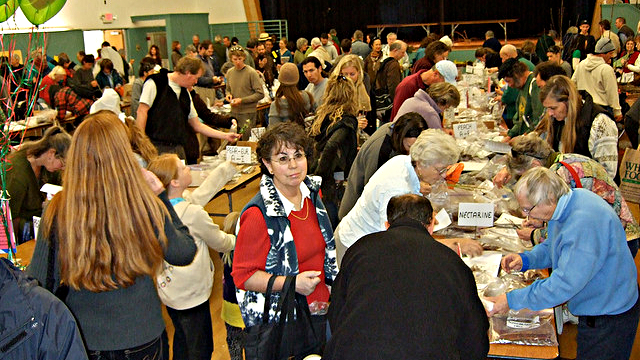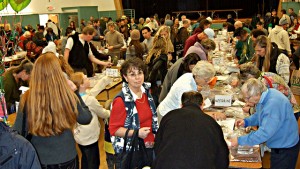Is your new year’s resolution to eat more fruits and veggies? Or eat more local produce? You can do both at once by growing your own fruit—you can’t get more local than fruit you harvest in your own backyard. Start by going to a scion exchange, where local rare fruit enthusiasts take cuttings from their fruit trees and swap them for other varietals.
The California Rare Fruit Growers (CRFG) hold these exchanges in the winter, when fruit trees are dormant. It’s a good time to clip the pencil-thin branches that have grown in the past year—called the scion—and graft these branches onto other plants. The Golden Gate Chapter of the CRFG is holding its annual scion exchange on Saturday, January 21 at Laney College in Oakland. Check this list to find your local chapter and its upcoming scion exchange.
Before you go to the exchange, make a wish list of the types of fruit trees you want to acquire. (The cuttings are free—donated by individuals—but the organization usually requests a small donation. The Golden Gate Chapter requests $4, but they note that no one is turned away for lack of funds.) Base your list on the types of fruit you like to eat, and the climate where you live.
An important measure of climate is the number of chill hours an area receives: the cumulative number of hours throughout the winter when the temperature is between 32 and 45 degrees Fahrenheit. Find out the number of chill hours for your area, so you know what kinds of fruit trees to choose. For example, the Oakland Hills, where I live, get about 400 chill hours. According to the Making the Best of the Scion Exchange guide from the Golden Gate Chapter of the CRFG, the best trees for my cool summers and mild winters are lemons and something called feijoa (a.k.a. the guavasteen). It isn’t cold enough for apples, nor is it warm enough for grapes. Also think about your yard’s aspect: if you are on a north-facing slope, you’ll probably get more chill hours than if you’re on a south-facing hillside, which tends to get more sun.

